Aoccho
Where do you live: New York City, USA.
Your education: MFA Computer Arts, School of Visual Arts.
Describe your art in three words: Fun, Concept, Imagination.
Your discipline: Digital Arts, Motion Graphics.
www.aoccho.com | Instagram
Can you describe your creative process from the initial idea to the final piece? How do you translate a single word or audio clip into a dynamic visual artwork?
Actually, I use words and music as my sources of inspiration. When I have a feeling or an idea from a piece of text, a single word, or a piece of music, I always first sense the mood that the text or music brings me. Then, I slowly begin to analyze this mood and try to describe it step by step. By detailing my feelings, I can generally help set the tone for my work.
First, what kind of atmosphere does this mood create? Is it heavy? Light? Joyful? Or interesting? By clarifying the atmosphere, I can naturally have an idea of what kind of color impression this atmosphere brings me. This color impression then becomes the color palette for my work. Next, I consider the rhythm of this atmosphere. Does it start with a consistent pace and then have an emotional twist? Or does the emotional pace rise and fall with twists and turns? After confirming these three steps, I usually can visualize the scene that this mood brings me. Then, I start creating this scene and apply the color palette I clarified earlier. Since I use motion graphics to present my work, after the basic scene is completed, I move on to the animation part. In the animation, I also follow the rhythm of the mood I determined earlier to guide the presentation and creation.
During the creative process, there are always many experiments and new ideas that emerge. The final product might differ from the initial concept, but essentially, detailing my feelings and the mood is my first step in starting the creation of a piece.
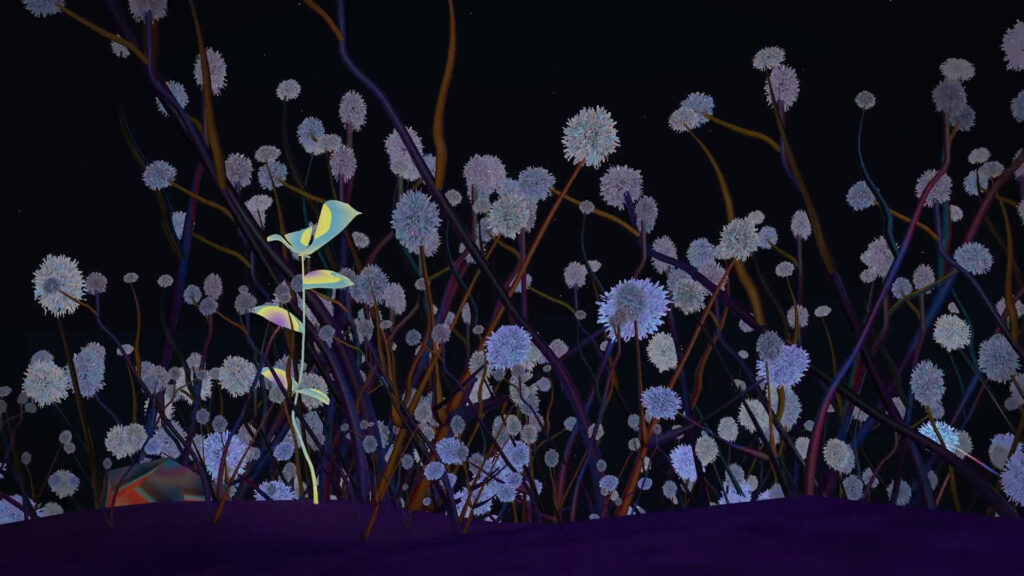 Aoccho | In the Zone, Entrance | 2018
Aoccho | In the Zone, Entrance | 2018
How does your multicultural background influence your work, particularly in the way you explore language differences and phonic experiences?
I believe that having a multicultural background gives me the opportunity to be exposed to different cultures and languages. This also makes me realize that the tones and feelings expressed by each language are closely related to the culture from which they originate. Therefore, each culture’s language has its unique characteristics. During the process of switching between different languages and cultures, I also discovered that the descriptions of the same state or thing in different languages can be vastly different. Even just listening to the expressions of the same thing in various languages can reveal the unique personalities of different cultures. This discovery has made me pay special attention to textual descriptions and sounds/music, which have become sources of inspiration for my creations.
Can you elaborate on your fascination with infographics and how it has shaped your approach to animation and motion graphics?
Actually, at that time, I was wholeheartedly aspiring to become a historical researcher. My research topic mainly focused on 17th-century nautical charts. After completing several research presentations and reports, I had a question: Is there a more interesting way to present my research? After all, my research was about navigation and nautical charts, and using traditional PowerPoint presentations made it difficult to convey the dynamic nature of maritime activities. Moreover, I felt that if I could communicate my research in a more engaging way, the audience would find it easier to understand and resonate with my work.
Coincidentally, I came across the term “infographics” and, being a bit of a bookworm, I researched it thoroughly. This led me to discover motion graphics and animation. I realized that motion graphics were exactly what I was looking for to replace still images. Motion graphics really opened up a new world for me, and because I found it so fascinating, I decided to change my career path from historical researcher to motion graphics!
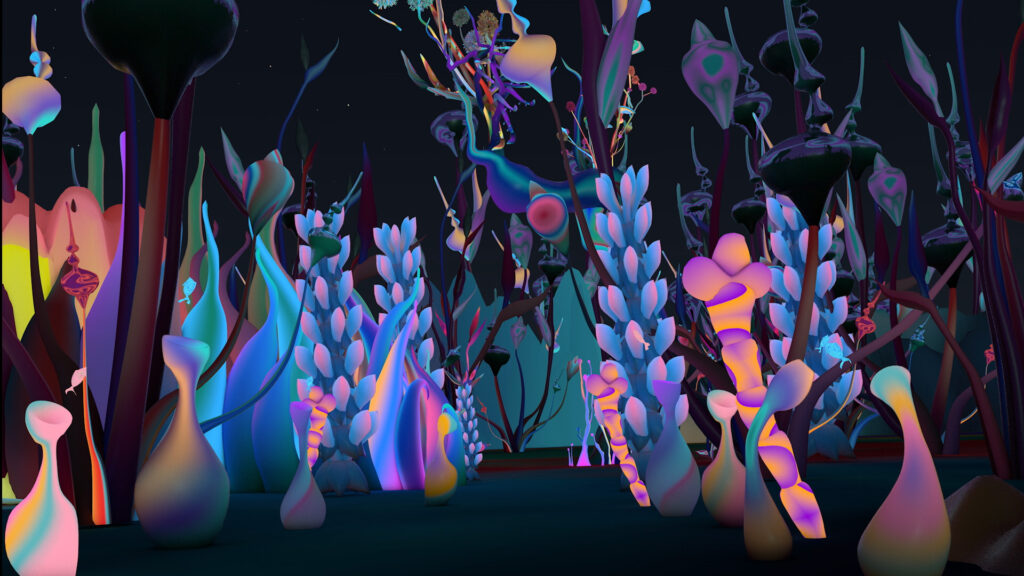 Aoccho | In the Zone, Forest 1 | 2018
Aoccho | In the Zone, Forest 1 | 2018
Your piece “Before even beginning” visualizes the moment a new idea emerges. Can you walk us through the creation of this artwork and the concept behind it?
This series of works is actually a commemoration for myself. When I decided to start creating as an artist under the name Aoccho, I wanted to make a piece to mark the beginning of it all. So, I came up with the concept “Before even beginning.” I started thinking about how my inspirations and ideas form and evolve before I actually begin a project. I also wanted to take this opportunity to visualize my thought process.
I thought about how, when I have an idea, it suddenly bursts into my mind like a point. In the first few seconds, the idea might come too suddenly, and it is not yet stable or fully formed. But this idea slowly disperses and spreads, transforming from a bursting point into expanding segments. Once the idea stabilizes, it becomes a line. Although the idea is stable, it might still undergo deformations and changes, so the line will have noise and color variations.
At this point, even though the idea is stable, there are still uncertainties and doubts that cut the lines into uneven blocks. However, once the doubts are eliminated and the idea becomes more certain, it transforms into softer and more diverse lines with more consistent color changes, indicating certainty.
After all the preliminary ideas are confirmed, the next stage is to try some deformations and explore other possibilities, which will serve as the foundation for the first step of creating the actual work.
So, this is what I want to express in “Before even beginning” – visualizing my thought process for new ideas and commemorating my official activities as the artist Aoccho.
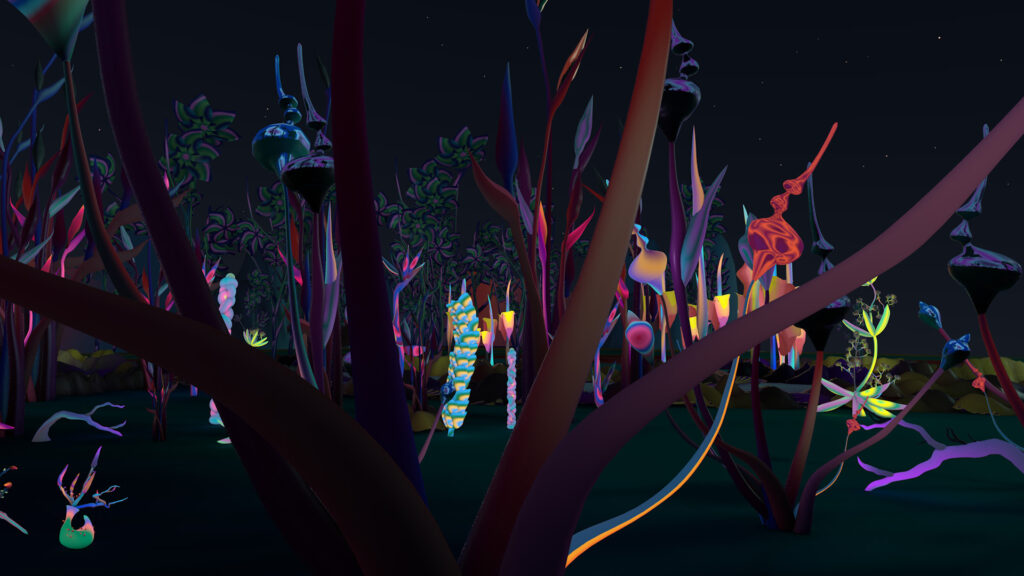 Aoccho | In the Zone, Forest 3 | 2018
Aoccho | In the Zone, Forest 3 | 2018
The “In the Zone” series presents a vibrant, surreal environment. What inspired these works, and what message do you aim to convey through them?
Actually, “In the Zone” is a 3D animation. The still images you see now are from this animation. This is my first 3D animation. At that time, I wanted to create a work that could represent myself. Then I thought about how I switched from the field of historical research to motion graphics. You could say it was a transition from a “boring and rigid” field to a “lively, imaginative, and dynamic” one. Both of these aspects are part of me. So, this work is actually a statement of my personal characteristics.
This series mainly divides into two stylistic directions. One side features regular shapes with dull colors, while the other side, which you see now, is vibrant and surreal. In the animation, there is a character that travels between these two worlds, representing my transition between the two fields. Therefore, “In the Zone” is a statement of my personality and experiences.
I am currently focusing on showcasing the surreal series, probably because I feel that the lively, imaginative, and dynamic motion graphics represent my current life and world. This style reflects who I am right now.
You have worked with notable clients like Paul McCartney, Jenny Holzer, and Virgil Abloh. How do you balance client projects with your personal artistic endeavors?
When working on client projects, many graphic assets are usually pre-determined by the client. However, since I do motion graphics, my main task is to animate these graphics in various ways to tell the story and convey the feeling that the client wants to express. So, even though the graphics for client projects are controlled by the client, the way the story is told and expressed is something I have control over. In my view, this is similar to my personal works because, in my personal artist work, I aim to describe a state and visualize a feeling. For me, this is just another way of storytelling.
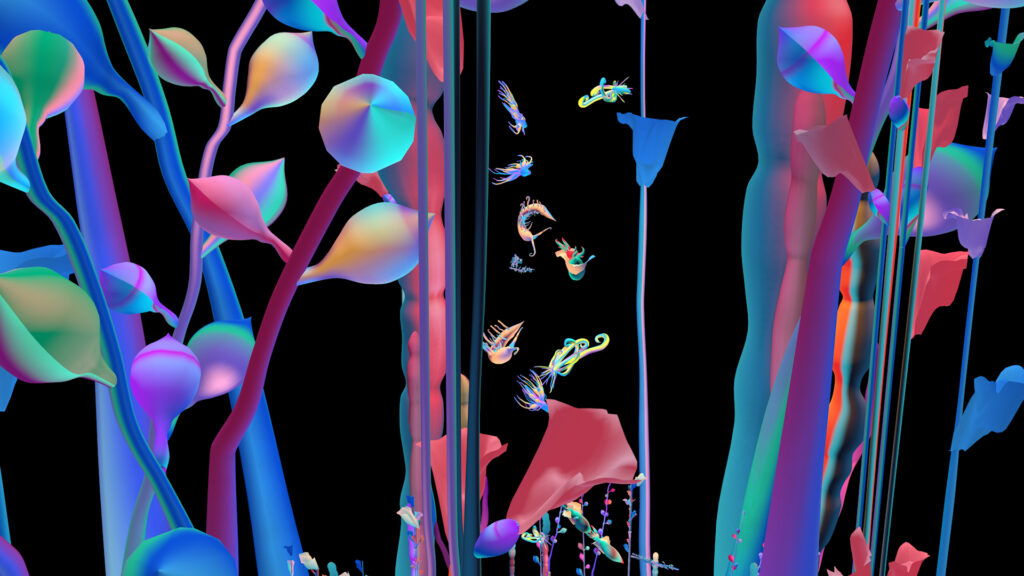 Aoccho | In the Zone, Underworld 1 | 2018
Aoccho | In the Zone, Underworld 1 | 2018
Can you share any memorable experiences or challenges from your collaborations with high-profile brands and individuals?
One of the most challenging projects to talk about was Jenny Holzer’s installation in the lobby of New York’s 7 World Trade Center (7WTC). It was a 36-hour-long art installation displayed on a 65-foot-wide, 14-foot-high fortified-glass security shield. The production itself was quite challenging, and after ensuring that all the video outputs were flawless, I worked with an IT team from Vancouver to test and make adjustments on the screen. It was a very interesting experience.
So far, the clients and collaborators I’ve worked with have all been very talented and friendly. Even when I was just a newcomer in the field, they respected my expertise. I have had the honor to participate in different types of motion graphics exhibitions, some in public places and others on social media platforms, websites, or apps. Some projects allow us to know the viewership and participation rates, while others do not. Among the measurable numbers, the most impressive was the work I did for Maybelline on two TikTok videos. One video garnered 40 million views, and the other 28 million views. To this day, they rank as the first and third most-watched videos on that account. These quantifiable numbers have left a lasting impression on me.

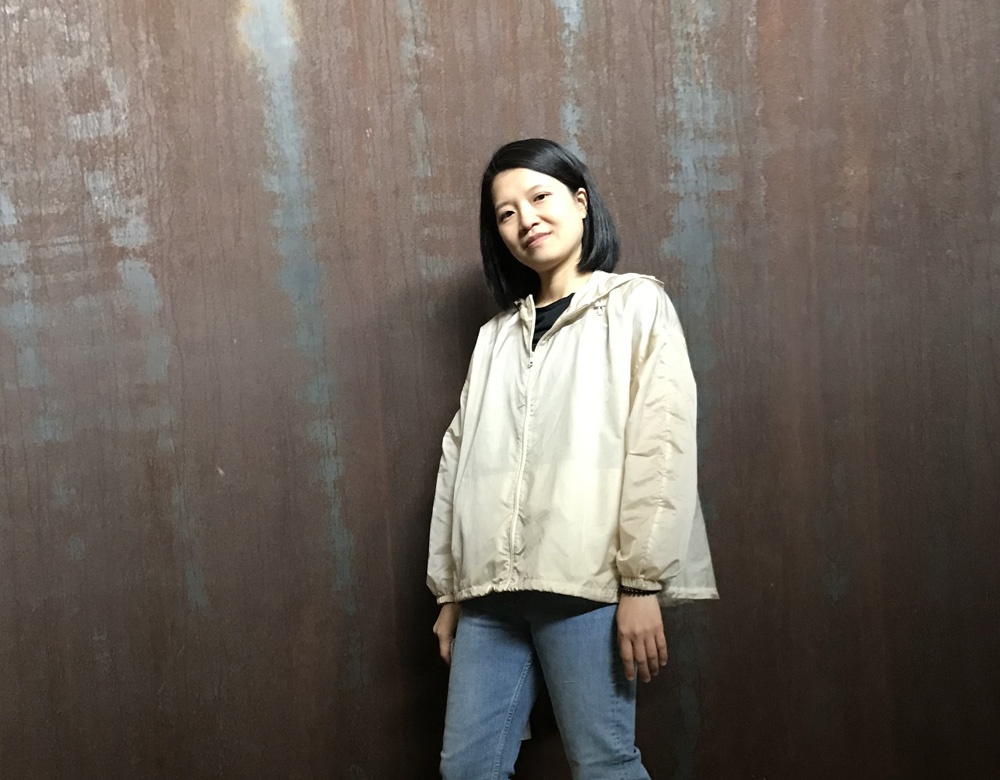
Leave a Reply
You must be logged in to post a comment.